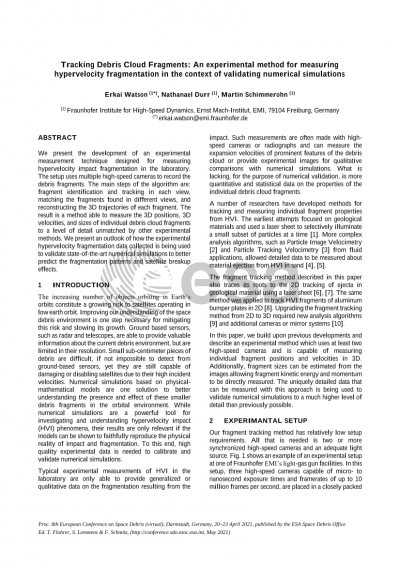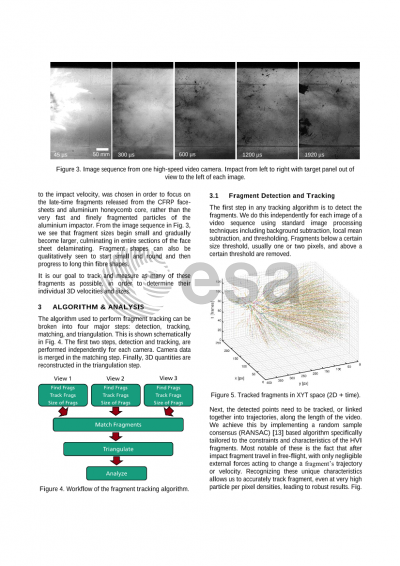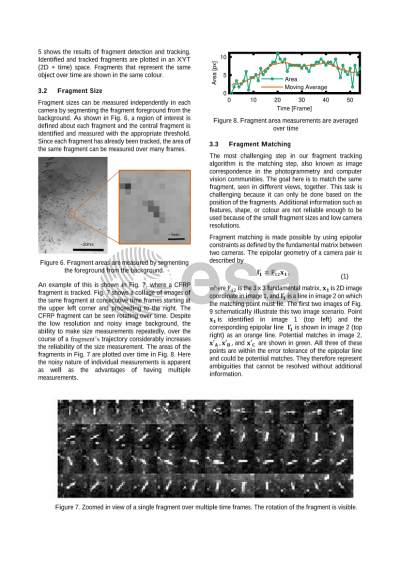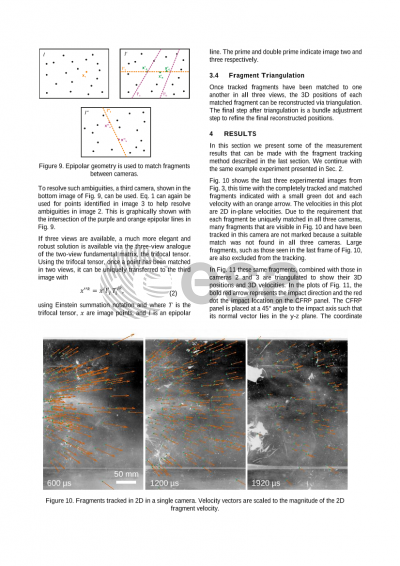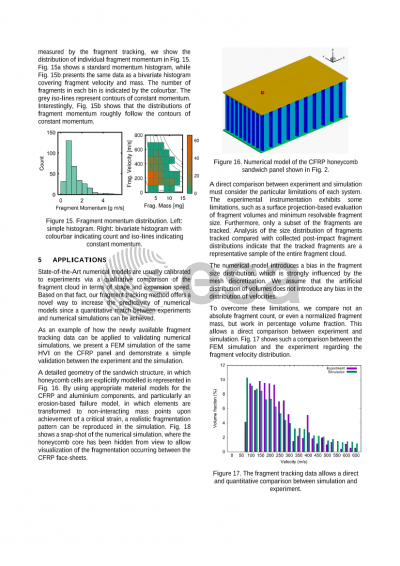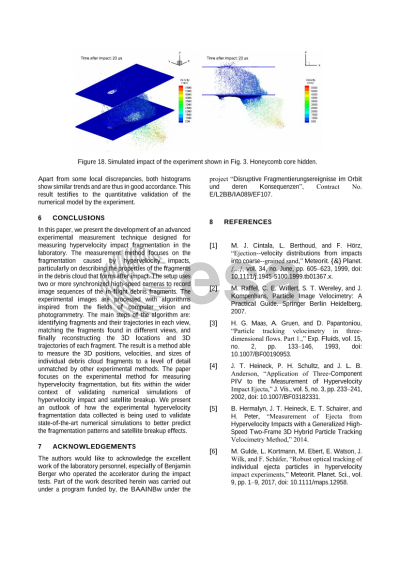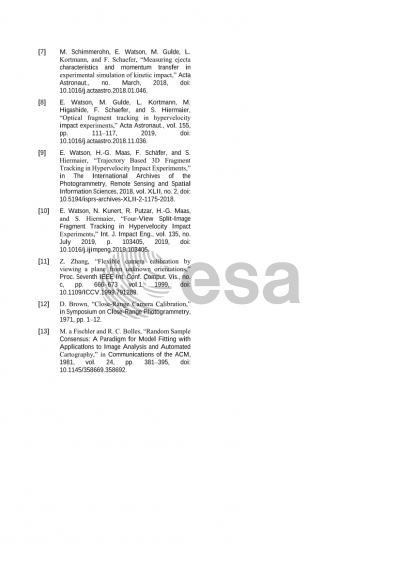Document details
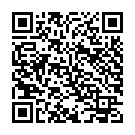
Abstract
The increasing number of objects orbiting in Earth’s orbits constitute a growing risk to satellites operating in low earth orbit. Improving our understanding of the space debris environment is one step necessary for mitigating this risk and slowing its growth. Ground based sensors, such as radar and telescopes, are able to provide valuable information about the current debris environment, but are limited in their resolution. Small sub-centimeter pieces of debris are difficult, if not impossible to detect from ground-based sensors, yet they are still capable of damaging or disabling satellites due to their high incident velocities. Numerical simulations based on physical-mathematical models are one solution to better understanding the presence and effect of these smaller debris fragments in the orbital environment. While numerical simulations are a powerful tool for investigating and understanding hypervelocity impact phenomena, their results are only relevant if the models can be shown to faithfully reproduce the physical reality of impact and fragmentation. To this end, high quality experimental data is needed to calibrate and validate numerical simulations.
In this paper, we present the development of an advanced experimental measurement technique designed for measuring hypervelocity impact fragmentation in the lab. The measurement method focuses on the fragmentation caused by hypervelocity impacts, particularly on describing the properties of the fragments in the downrange debris cloud that forms after impact. The setup uses two or more synchronized high-speed cameras to record image sequences of the in-flight debris fragments. The experimental images are processed with algorithms inspired from the fields of computer vision and photogrammetry. The main steps of the algorithm are: identifying fragments and their trajectories in each view, matching the fragments found in different views, and finally reconstructing the 3D locations and 3D trajectories of each fragment. The result is a method able to measure the 3D positions, velocities, and sizes of individual debris cloud fragments to a level of detail unmatched by other experimental methods. The paper focuses on the experimental method for measuring hypervelocity fragmentation, but fits within the wider context of validating numerical simulations of hypervelocity impact and satellite breakup. We present an outlook of how the experimental hypervelocity fragmentation data collected is being used to validate state-of-the-art numerical simulations to better predict the fragmentation patterns and satellite breakup effects.
Preview
